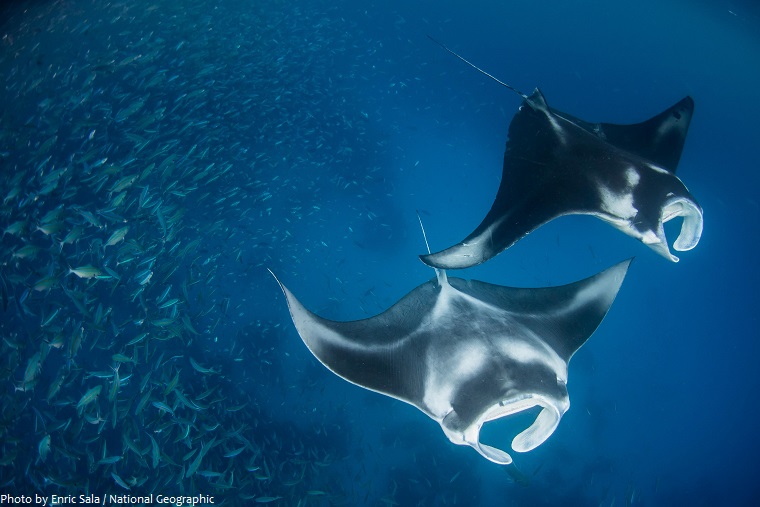
Oceanic manta ray skin#
It is also considered likely that mantas do this to blast parasites off of their skin - what you have to do when you can't scratch !Īqua-Firma will continue to sponsor manta ray research around the world, providing opportunities for you to experience them with us at project sites of leading manta researchers and conservationists. When closer to them, we can't help but feel that some of the leaps are designed to attract our attention and somehow communicate with us. We often locate manta rays in Mexico by watching the horizon for these displays. Some of our most dramatic experiences with manta rays is when they leap high out of the water, landing with a huge splash on the sea surface. There are locations off the east coast of Isabela Island where we can hope to see them when on a Galapagos Dive Liveaboard - but we can also hope to snorkel with them at other parts of the same island. These are most commonly seen during the warmer water season from December to early June. These islands are best known by the largest island in the archipelago, Socorro.Īnother place we often see Giant Mantas is the Galapagos Islands. We can best see these on our liveaboard trips to the Revilla Gigedo Archipelago, far out into the Pacific Ocean west of Mexico. Giant Manta Rays can reach more than 7m from wing tip to wing tip. We most commonly watch them at cleaning stations, where they allow small fish to pick off irritating and even harmful parasites.

They often choose to glide close to us and might even touch our camera gear, as if trying to ascertain if the reflection they see is a real manta, or an image of themselves. We are dwarfed by reef mantas which at their maximum can reach more than 5m from wing tip to wing tip. The interactions we enjoy in Komodo can be incredibly moving. This has evolved into a study of the impacts of microplastics - a growing issue as the amount of plastic in our oceans continues to increase and be ingested by filter feeders. The focus on MMF work in Indonesia has been in identifying individuals, where they travel and main threats. These trips are led by Aqua-Firma Marine Scientist, Charlotte Caffrey, along with hosts from the Marine Megafauna Foundation, whose research these trips help to finance. We enjoy our best observations of Reef Manta Rays in the Komodo and Raja Ampat areas of Indonesia - in particular during our Manta Ray Research, Coral Triangle & Dragons trips to Komodo. Work continues, with some simply breathtaking experiences when our research vessel can be amongst as many 250 whale sharks and 100 or more manta rays.

We often observe these off Mexico on our Whale Shark Research & Photography expeditions, during which we have been trying to take small skin samples and photographs, which taken together from the same individual ray, can provide proof as to whether or not they are indeed a separate species. These usually reside in different areas, but they live side by side in southern Mozambique where 'Queen of the Mantas', Dr Andrea Marshall, was able to observe differences which she went on to prove made them different species.Ī population of Mantas in the western Atlantic is likely to be a third species.

There are two known species: the Giant or Pacific Manta ( Mobula birostris) and the Reef Manta ( Mobula alfredi). Manta Rays are some of the most intelligent and interactive marine creatures we can hope to snorkel or dive with.


 0 kommentar(er)
0 kommentar(er)
